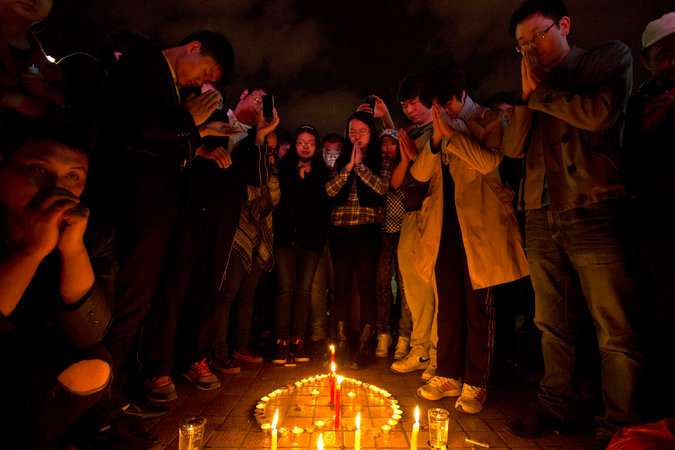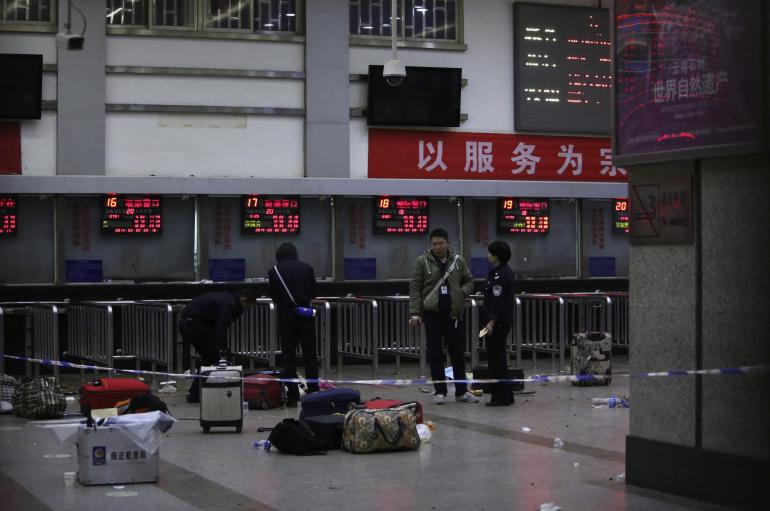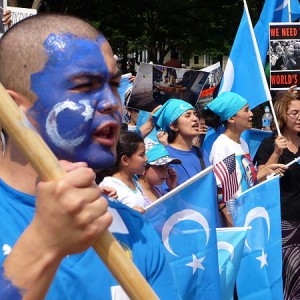On March 1st, a group of ten assailants arrived at the Kunming Railway Station and attacked local civilians, killing over 30 people and injuring over 130. If the Chinese government is correct in claiming that these “terrorists” are Xinjiang separatists, then this tragedy is not the first of its kind. Beginning in 2010, mass stabbings, suicide bombings and other attacks directed at innocent civilians have taken place all over China. This recent attack is a strong indication that China is still dealing with internal struggles, stemming from ethnic and cultural conflicts. The Chinese government may need to reevaluate its current hard-stance against Xinjiang separatists if it is to resolve these issues.
Many international scholars interpret these attacks as the result of the dissatisfied “Uighur” people living in Xinjiang.

Although the Chinese government has released very little information regarding the recent massacre, it is clear that this particular group is highly organized. The attackers, both men and women, were dressed entirely in black and wore masks to cover their faces. The police was forced to shoot four of them but several members of the group managed to escape capture and the authorities have yet to release a list of suspects. Although no group has claimed responsibility for this attack, similar “terrorist” attacks have occurred since 2009. In November 2013, two men identified as Xinjiang separatists ran down civilians at Tiananmen square after setting fire to their vehicle. A group of suicide bombers attacked police officers with cars, motorbikes and improvised explosive devices in January, earlier this year.
Many international scholars interpret these attacks as the result of the dissatisfied “Uighur” people living in Xinjiang. The Uighurs, also known as Uyghurs, are a group of Muslims who speak a language similar to modern day Turkish and identify themselves as culturally and ethnically similar to people living in Central Asia. There are approximately ten million Uyghurs living in Xinjiang. Uyghurs form the majority of Xinjiang separatist groups although Xinjiang separatists are not exclusively Uyghurs. Until the later half of the 20th century, Xinjiang remained partially autonomous from China. The Communist government managed to gain complete control of Xinjiang in 1949 and since then, Uyghurs have been lobbying for varying degrees of independence from the Chinese government. Some Uyghur interest groups wants to increase economic and cultural autonomy while others will settle for nothing less than complete separation from China. The latter group seeks to establish the new state of East Turkestan. Although the Uyghurs are not directly accused in the most recent attacks, their involvement has been implied by the Chinese authorities.

Uyghurs claim that their resentment towards the Chinese government is due to human rights violations as well as the systematic repression of Uyghur culture and religion. Since 1949, many Uyghur leaders have been imprisoned by the Chinese government and some have even fled the country. Beijing has been criticized by the US for arresting peaceful Uyghurs protestors. After the 2010 terrorist attacks, state surveillance of the Uyghurs increased. They are often subjected to random searches and their religious activities are being more restricted than ever before. Moreover, Uyghurs are worried because their influence in Xinjiang has been severely reduced after the Chinese government began encouraging the mass-migration of Han Chinese into the county. Over the past decade, the number of Han Chinese living in Xinjiang has increased to the point that the Uyghurs are now a minority in the region. Although China has made significant investment in the industrial and energy sectors of Xinjiang, many Uyghurs claim that only the migrant Han Chinese are benefitting.
Many foreign scholars have criticized the carrot and stick strategy that the government is currently using. Chinese authorities are trying to suppress Xinjiang separatists into submission by limiting their religious freedom and human rights. At the same time, they are hoping to quiet the dissatisfaction of the Uyghurs by investing in the region to create jobs and improve the living conditions. Unfortunately this strategy has failed because the “carrots” are too few, and shared with the Han immigrants. Given that neither the “carrots” nor the “sticks” are working, the Chinese government needs to reevaluate its current policy towards the Uyghurs. Some Chinese leaders believe that giving the Uyghurs too much freedom will lead to increased separatist notions. However, suppressing Uyghurs’ religious and cultural activities has clearly been detrimental to the interests of both sides. China’s new leaders must create a better strategy if they are to bring stability to the region.




